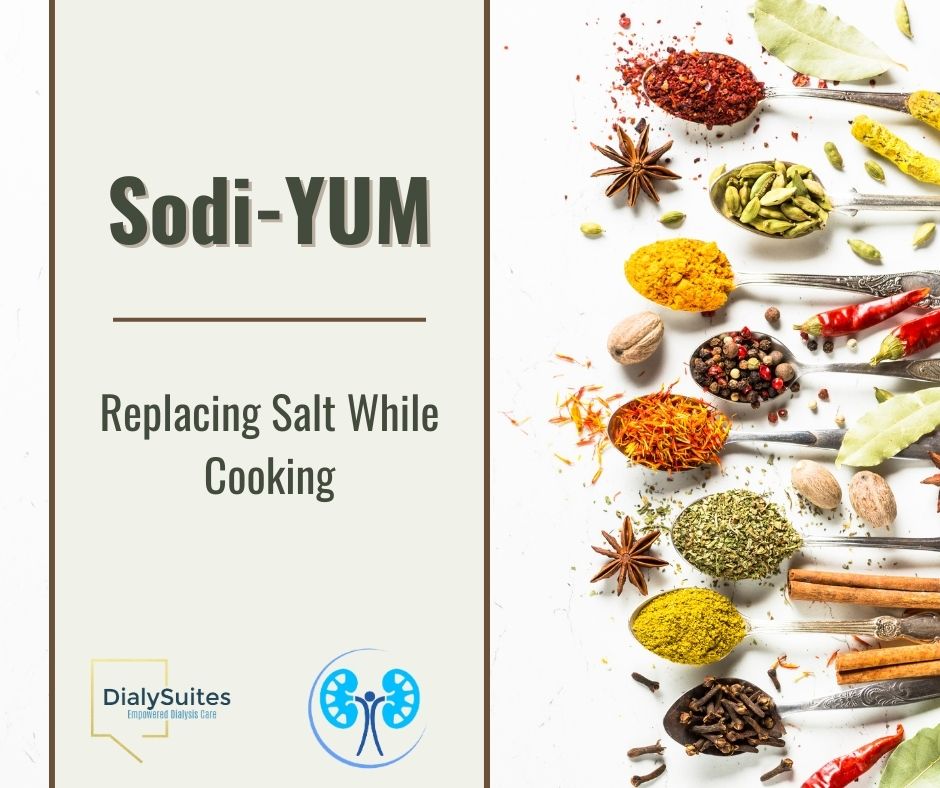|
When a patient gets diagnosed with Chronic Kidney Disease, a lot of questions about diet and fluid intake tend to come up. How much should I drink? What should I eat? What needs to be taken out or altered in my normal diet? These can be daunting and seem overwhelming. An easy switch can be to reduce the added salt, or sodium chloride, when cooking. Added salt can come from your table salt shaker or other seasoning mixes commonly found in your spice cabinets. Added sodium can also come in the form of preservatives in canned goods, frozen foods, and boxed meals or ingredients. For more information on sodium, you can review our Kidney Korner segment on sodium here.
Common Seasonings with Added Salt
Seasonings as Salt Replacements
Be sure to check the labels of your spice bottles in all circumstances to ensure that it is truly free of sodium. When they have phrases like “No Salt Added,” “Salt Free,” and “Low Sodium,” it can mean that the salt has been replaced with potassium chloride, a different version of salt. This can be just as problematic as sodium chloride for patients with kidney diseases and hypertension. You can learn more about how to cook and season your food with spices instead of salt from the National Kidney Foundation here. If you have any questions or concerns about salt and sodium in your diet, you can contact your care team for additional assistance. As always, stay safe and healthy! Resources: https://www.nhlbi.nih.gov/health/educational/healthdisp/pdf/tipsheets/Use-Herbs-and-Spices-Instead-of-Salt.pdf Comments are closed.
|
About The BeanThe Bean is a blog on a mission to share valuable information in the world of Nephrology. We believe in empowering through education and The Bean is a great place to find resources and information on topics related to high blood pressure, kidney disease, dialysis, and topics that enhance the kidney minded lifestyle. Enjoy and be sure to subscribe! Archives
July 2024
Categories |
Contact Us |
Careers |
Connect With Us |
|
13241 Bartram Park Blvd., Suite 1001
Jacksonville, FL 32258 Open Map Tel: (904) 260-9898 Fax: (904) 260-9891 |
Interested in joining our team? Jacksonville Nephrology is dedicated to compassionate patient care through teaching and giving our team the tools needed to go above and beyond. Learn more about current openings. Learn More
|


